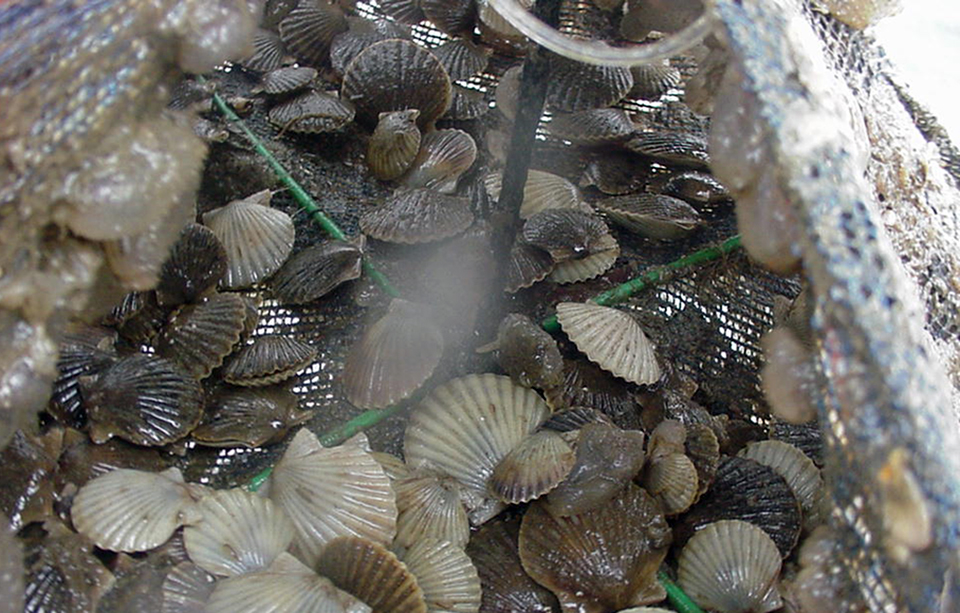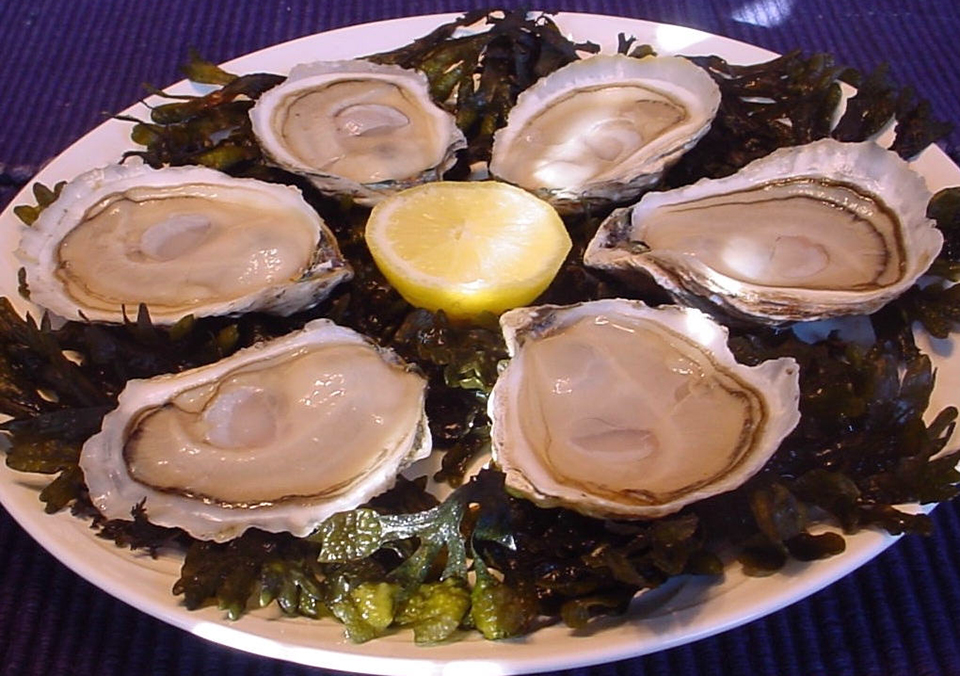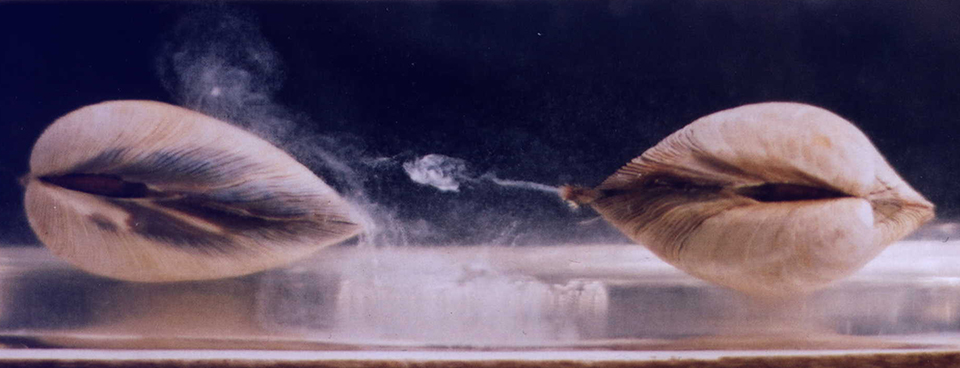Triploid bivalves’ advantages likely a consequence of’ sterility

A polyploidy is an organism that contains more than the usual two sets of chromosomes in its cell nucleus. This condition, which is the result of chromosome replication without cell division, can occur naturally or be induced in laboratory conditions in early stages of development. Not to be confused with controversial genetically modified organisms, polyploidy does not involve introduction of foreign genetic material.
Polyploidy in nature
Naturally occurring polyploidy is an important mechanism in plant breeding. About 47 percent of plants with flowers are polyploids. The well-known apple varieties Stayman, Baldwin and Rhode Island Greening are “spontaneous polyploids.”
Polyploidy has been widely used and found safe by the agriculture industry, and accepted by the general public. Many cultured food plants, such as the wheat now grown for bread flour, Triticum aestivum; the original South American potato; coffee; peanuts; and strawberries, are polyploid. Sterility caused by triploidy is also useful to produce seedless fruits that are easier to eat (watermelons, bananas) or taste better (less-bitter cucumbers).
Natural polyploidy can also be found in animals. Owing to the absence of well-defined chromosomes in fish, polyploidy has spontaneously originated and been sustained in populations of three orders of fish: the viviparous Poeciliids, oviparous Cyprinids and Atherinids. It has also been found naturally in trout, frogs and animals with asexual reproduction modes, including weevils, grasshoppers, salamanders and lizards. Certain cells of some diploid animals are polyploid, such as the salivary glands in Diptera and human liver cells.
Induced polyploidy
Induced polyploidy is less available to animal breeders because of methodological problems. In most food animals, fecundity is low and eggs are not easily accessible at the moment of fertilization, which makes high mortality associated with treatments an even greater obstacle. However, polyploid embryos are easier to produce in marine organisms such as bivalves and many fish species due to both high fecundity and the fact that they release their eggs and sperm into the water during fertilization.
Although many kinds of polyploids have been used in plant breeding, only two seem to have value for the aquaculture industry: triploids with three sets of chromosomes (3n) and tetraploids with four sets of chromosomes (4n).
Triploid bivalves

Triploid bivalves have sparked worldwide interest since the early 1980s because of their reported enhanced growth, meat content, flavor and disease resistance. These advantages are most likely a consequence of triploids’ sterility, although some theories raise the possibility of heterosis (increased fitness due to higher heterozygosity) and triploidy gigantism (increased cell size due to larger nuclei).
Triploid organisms are almost always sterile. Their odd number of chromosomes makes it impossible for the cells to achieve proper meiosis during gametogenesis and for the animals to produce haploid gametes.
Interest in sterility
Sterility is interesting in aquaculture for several reasons. First, energy usually diverted toward sexual maturation is available for somatic growth. Adult triploids are expected to be larger than diploids for that reason alone. Growth is of primary importance in the aquaculture industry and has been extensively investigated in commercial species.
Triploid mollusks are significantly larger than diploids in almost all species studied, including the American oyster (Crassostrea virginica); bay scallop (Argopecten irradians); pearl oyster (Pinctada martensii); noble scallop (Chlamys nobilis); and Pacific oyster (Crassostrea gigas). Moreover, the undesirable side effects of sexual maturation – hypersensitivity to high temperature and pathogens that can lead to high mortality – are overcome with sterility.

Second, in shellfish such as oysters, late summer spawning depletes glycogen stores, which affects flavor and appearance, and renders the animals unmarketable. The creation of a sterile oyster overcomes this problem and delivers a product that can be harvested year-round. In France, triploid oysters have been marketed for a few years under the name Four Seasons to highlight this quality.
The third advantage of triploids’ sterility is the potential to use nonnative species for aquaculture in areas where they might compete with indigenous species. In Chesapeake Bay in the eastern United States, where the industry for the native C. virginica oysters has almost disappeared due to overfishing and disease, triploidy has allowed culture trials of the nonnative Suminoe oyster (C. ariakensis). This new species, which is resistant to diseases, has potential to help the dying industry.
However, sterility of triploids is not foolproof. In rare cases, triploid organisms ripen naturally and produce diploid gametes or partially revert to diploidy, creating mosaic organisms susceptible to spawn viable haploid gametes.
Triploid production
Two methods are commonly used to produce triploid organisms: shock treatment at an early stage of development and crossing tetraploid broodstock with regular diploids. The induction of triploids relies on thermal, chemical, or physical shock treatment during meiosis.
When the shock is administered, the polar body is retained within the egg nucleus, effectively doubling the chromosome number. The haploid set of male chromosomes added during fertilization produces a triploid organism with three sets of chromosomes.
The highest yields in inducing triploidy have resulted from chemical shocks. However, the most efficient chemicals are usually hazardous and do not meet U.S. Food and Drug Administration (FDA) approval for commercial production.
Triploids from tetrapolids
The use of tetraploid broodstock for triploid production does not require chemicals. However, getting tetraploid broodstock is not an easy task.
In theory, 4n organisms could be induced by inhibiting first cleavage or by blastomere fusion, but the mortalities associated with those methods have always been extremely high. This difficulty was overcome in 1994, when Ximing Guo and Stan Allen obtained highly viable tetraploids by using gametes from a ripe triploid.
The privately owned patent for this method has been used to produce Pacific oyster broodstock on the U.S. west coast. Tetraploid American oyster broodstock have also been developed for the U.S. East Coast oyster industry, but were only made available to a few growers in Massachusetts for preliminary trials.
Triploids produced from tetraploids seem the best choice for the oyster industry, even if the reduced broodstock limit the genetic diversity of the offspring. Not only are they FDA-approved for commercial sale, but these triploids seem noticeably hardier than chemically induced triploids.
Commercial use
Oysters are the first shellfish species to be enhanced by triploidy and marketed on a commercial scale, although interest is currently rising to investigate the triploid production of hard clams, scallops, geoducks and others. Bay scallop triploid production is particularly interesting, as it could result in a larger adductor muscle that could be marketed at the end of the first growing season. This would overcome the expense and mortalities associated with the overwintering period usually required to grow the species to market size.
Growth performance trials funded by the Northeastern Regional Aquaculture Center are currently under way for bay scallops. Triploid scallops produced at the Martha’s Vineyard Shellfish Group in Massachusetts, USA, have been deployed in Rhode Island, Massachusetts and Connecticut to establish the true commercial value of this technology to the bay scallop industry.
(Editor’s Note: This article was originally published in the June 2004 print edition of the Global Aquaculture Advocate.)
Now that you've finished reading the article ...
… we hope you’ll consider supporting our mission to document the evolution of the global aquaculture industry and share our vast network of contributors’ expansive knowledge every week.
By becoming a Global Seafood Alliance member, you’re ensuring that all of the pre-competitive work we do through member benefits, resources and events can continue. Individual membership costs just $50 a year. GSA individual and corporate members receive complimentary access to a series of GOAL virtual events beginning in April. Join now.
Not a GSA member? Join us.
Author
-
Amandine Surier, M.Sc.
Martha’s Vineyard Shellfish Group
P.O. Box 1552
Oak Bluffs, Massachusetts 02557 USA
Tagged With
Related Posts

Health & Welfare
Challenges to commercializing shrimp triploidy
Once satisfactory performance is demonstrated in commercial larval rearing and grow-out, automated induction will finalize the triploidy commercialization.

Health & Welfare
Black tiger domestication, selective breeding advance in Australia
Using clear-water tank systems, CSIRO and a collaborating farm have advanced the domestication of black tiger stocks in Australia.

Health & Welfare
Reporting of fish escapes, causes crucial step in developing better controls
Escapes of fish from farm facilities can lead to interbreeding and competition for mating opportunities with wild fish. Escapees may also transmit diseases and parasites, as well as compete for feed and space.

Health & Welfare
Triploid hard clams evaluated for Florida aquaculture
Induced triploidy could theoretically improve the survival of cultured hard clams because triploids divert energy from reproduction to somatic growth, resulting in larger and potentially hardier clams than diploids.


